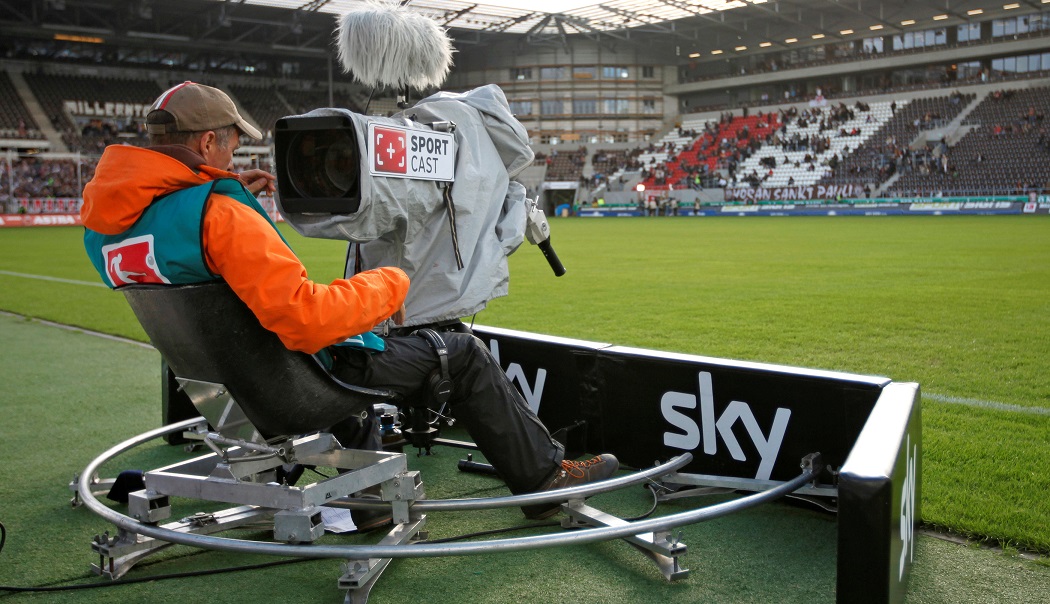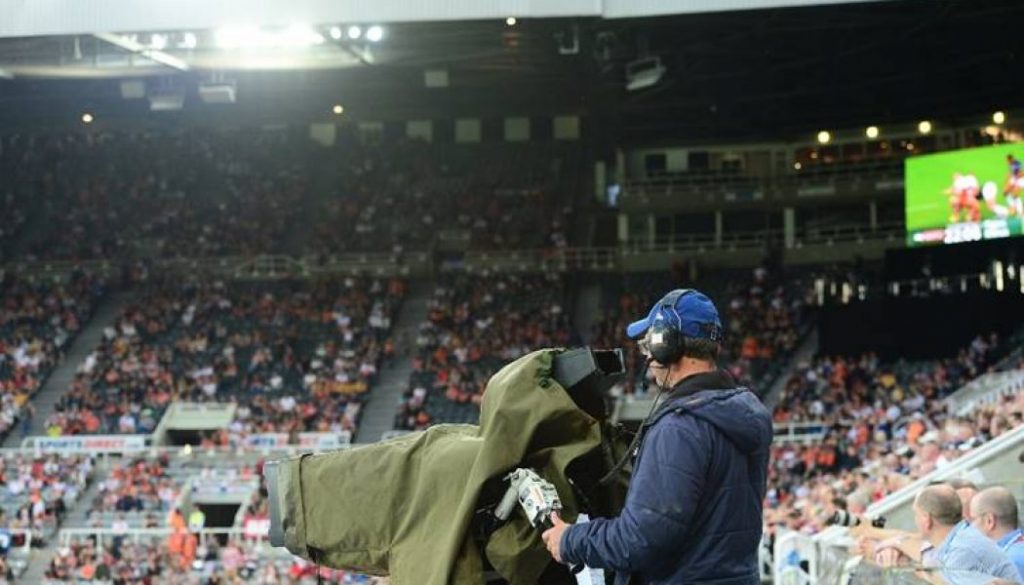Member Insights: How Covid-19 Will Impact The Television Landscape
July 10, 2020
What are some of the lasting impacts Coronavirus will have on the broadcasting world in the next couple of months and years? Ian Whittaker, two-time City A.M. Analyst of the Year winner, overviews the situation TV is facing.
For Television, CV-19 has been a doubled edged sword. On the one hand, the enforcement of stay at home orders and the increase in working from home, together with demand for news in particular, helped boost live TV audience (at least initially) and led to greater consumption of all forms of television content, whether paid or not.
On the other hand, for the free to air broadcasters in particular, it also meant the decimation of advertising revenues and, for Pay-TV operators, the suspension of live sporting events, which formed a major part of their unique appeal to subscribers.
So far, no major TV broadcaster has gone bust, despite the likes of Channel 4 seeing a 50%+ drop in advertising revenues (which is still better than some newspaper titles for example). It is unlikely that there will be any major changes in ownership and / or collapses, at least in the short term despite the sharp falls in advertising revenues.
Ironically, in some ways, the crisis may have done the Broadcasters a huge favour in that it showed advertising decision makers that live TV remains a very powerful draw for viewers, especially in times of crisis.
In the United States, the major networks (Free to Air doesn’t really make sense in this context given most US households pay for TV in some form or another) such as NBC and CBS are part of bigger groups (Comcast, Disney, CBS Viacom etc) that can support their operations. In Europe, the Free to Air Broadcasters do tend to be stand-alone operators with advertising as their main source of revenues but some have major shareholder backing (e.g. RTL, TF1, Mediaset / Mediaset Espana) and, in any event, the markets have shown their willingness to support rights issues to provide funding.
On the businesses’ models, the effect of CV-19 are dramatic in the short term. US National TV advertising revenues were down a reported 27% yoy in April and 23% in May. In European countries, those falls have been more dramatic. For broadcasters that rely on TV advertising, the concern would be that the crisis does for them what the 2008 crisis did for print, namely accelerate a structural shift of advertising revenues out of the business.
In March 2020, so pre-crisis, WARC (World Advertising Research Center) estimated that global traditional Television advertising revenues would be $193bn in 2020. Obviously that forecast would have shrunk but that it is still likely to represent the single biggest category of advertising according to WARC’s estimates. There are plenty of platforms who would be happy to feed on the carcass of that TV advertising spending: not only the Googles and Facebooks but also, for example, Samsung and its push in the Connected TV space. There is another major issue for TV advertising in that major advertising categories such as Retail and Travel have been damaged by the pandemic.

Many pay-TV customers cite live sport as the key reason for their subscriptions
A second factor is that the advertising-dependent Broadcasters are already taking steps to protect their flanks and tap into digital advertising dollars. Disney and Comcast have both made steps on the programmatic front, offering combined OTT, AVOD (Advertising Video on Demand) and linear inventory to advertisers. European Broadcasters have been slower in this regard, not helped by audience measurement issues, but change is coming. Moreover, Broadcasters’ AVOD services offer the opportunity to both digital ad dollars and provide reassurance to advertisers looking for the reach of digital but without its reputational issues.
Recent studies by Magid showed that 75% of US sports viewers miss watching live sports on TV during the crisis and, more importantly, 2/3 of traditional Pay-TV customers cited live sports as the most important reason why they kept their subscription.
For traditional Pay-TV, the last few years have seemed like a continual defence against the march of more nimble OTT services that allow more flexibility and lower costs. It is a defence that has not always been successful with US cord-cutting on the rise for the past several years and the situation for European companies such as Sky more about monetising existing customers more than significantly even increasing the subscriber base, in the face of OTT competition. Squeeze on household budgets in the downturn will also put pressure on high-priced subscription services.
Yet again, the traditional narrative may be too negative. For a start, historically, Pay-TV services have done well in a recession as consumers retreat to the home. While Pay-TV services do face competition for those eyeballs that they did not face in 2009, the recent price increases of OTT services such as YouTube TV and Fubo have eroded the price advantage that many OTT services have enjoyed over Pay-TV rivals (nor have their increases been minor but 30% in the case of YouTube TV).
There is also an argument to say that consumers may flip back to the certainty of having one platform that has most of the content they want. That is strategy of Sky with its Sky Q product (in many cases, though, that has been diminished as content providers such as Disney take back control of their content to launch their own streaming services). However, the key overriding advantage for these platforms is Sports, which remains their key appeal. Recent studies by Magid showed that 75% of US sports viewers miss watching live sports on TV during the crisis and, more importantly, 2/3 of traditional Pay-TV customers cited live sports as the most important reason why they kept their subscription. Sports is likely to prove a very secure bulwark.
Will the OTT space have to turn to Sports – and pay massive amounts up front – to continue to attract customers?
It is likely to be in the OTT space where the biggest questions lie. On the surface, things look rosy. eMarketer estimates that the time spent on US streaming services will rise 23% yoy in 2020 (to 62 minutes per day) vs 15% in 2019, while Parks Associates estimates 76% of US households have OTT services vs 62% for traditional Pay-TV. Yet OTT providers face significant risks. While Netflix saw better than expected subscriber growth in Q1, it warned much of this growth was likely to have been pulled forwards from future quarters. More seriously, the loss of content such as Disney’s as the latter launches its own streaming services (which has reached 54.5m subscribers as of May 4th 2020) means that Netflix faces the prospect of diminishing appeal. While it is trying to build out its own suite of Netflix “Originals”, History suggests that it takes time – which Netflix may not have, especially given its cash burn position – to get this right.
There are also two wider questions linked to the points raised above. Firstly, as OTT players (at least in the US) become more like traditional Pay-TV offerings in their price points and offerings, what is their raison d’etre? OTT churn has already started to rise in the US to 41% in Q1 2020 (from 35%). Secondly, will the OTT space have to turn to Sports – and pay massive amounts up front – to continue to attract customers? It is likely that the OTT space will be split between the offshoots of the major content giants (with Disney in pole position globally) and the rest of the OTT space gradually consolidating.
Ian Whittaker was an Equity Analyst covering the Media and Digital sector for 20 years and is the current and two-time City A.M. Analyst of the Year winner. He is now a consultant on strategic and financial matters to companies in the Media and Digital space, and is involved in several ventures, including his own advisory business, Liberty Sky Advisors. He can be reached at ianrwhittaker@gmail.com


